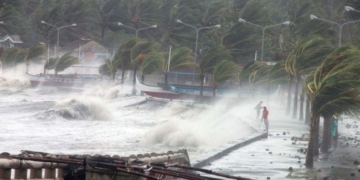The movement of the South American tectonic plate and its interaction with adjacent tectonic plates have driven the Andes mountain range to develop into the enormous size it is today.
The Andes is an extensive mountain range, stretching 8,900 km across South America, with an elevation of 7 km and a width of 700 km. Tectonic activity, involving the movement of large segments of the Earth’s crust, can create mountain ranges as slower-moving sections are pushed upward by faster-moving areas. Although this process is relatively straightforward in theory, monitoring the rate of tectonic movement over a period of 10 to 15 million years poses challenges for geologists.

The Andes is the longest mountain range in the world, spanning seven countries. (Photo: Wikipedia).
A research team from the University of Copenhagen, Denmark, employed a recently developed method to examine in greater detail the movements of the South American tectonic plate that formed the Andes. They discovered that some parts of the tectonic plate moved 13% slower 10 to 14 million years ago and 20% slower 5 to 9 million years ago, enough to explain some of the characteristics we observe today. They published their findings in the journal Earth and Planetary Science Letters, as reported by Science Alert on April 23rd.
“During the periods before the two slow movements, the South American plate collided with the Nazca plate to the west, pushing the mountain ranges and compressing them, causing them to rise higher,” explained geologist Valentina Espinoza from the University of Copenhagen. “The results reveal that a part of the mountain range existed beforehand, acting as a brake for both the Nazca and South American tectonic plates. As the tectonic plates slowed down, the mountains expanded.”
The technique used in the research began with the movement of the tectonic plate measured from a fixed point on Earth (APM). APM is primarily determined through the study of volcanic activity in the crust, where the path of magma informs geologists about how tectonic plates move. Next, Espinoza and her colleagues examined the movement of corresponding tectonic plates (RPM), calculating based on various factors, including data from the movement of the ocean floor’s rock layers. This method provides higher resolution data over shorter time frames than APM.
To determine the speed of movement of the South American tectonic plate, geologists used high-resolution RPM data to estimate APM through mathematical calculations. This method allows the team of experts to gain a better understanding of the interactions between tectonic plates. According to geologist Giampiero Iaffaldano from the University of Copenhagen, such methods can be applied to any tectonic plate, helping to refine historical models and improve the ability to replicate geological phenomena that are not yet well understood.


















































